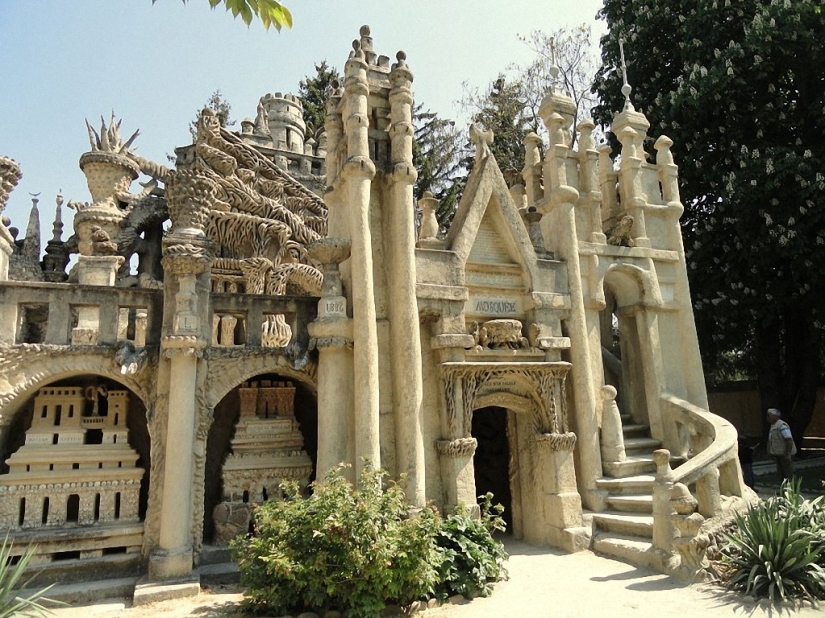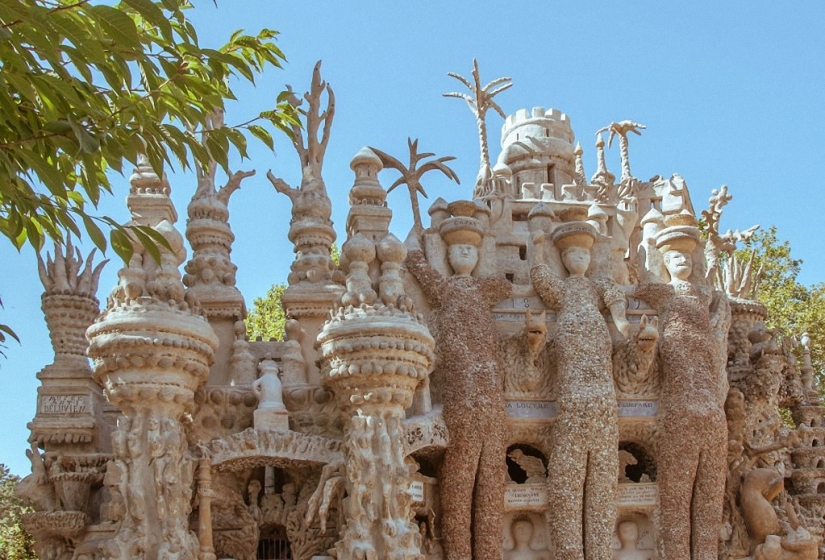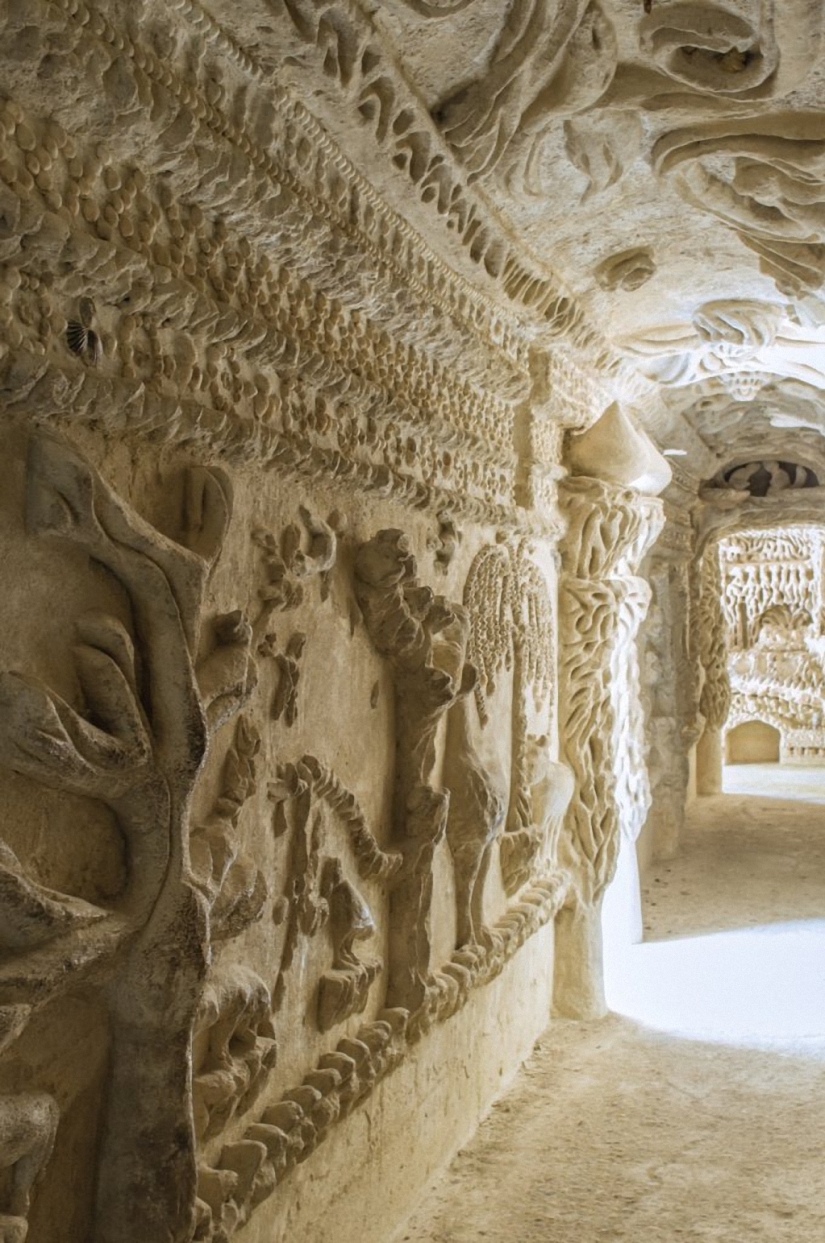Palace of the French Postman
Categories: Art | Beauty | Culture | Design and Architecture | Europe | History | Photo project | Society | World
By Vika https://pictolic.com/article/palace-of-the-french-postman.htmlThis is a story about what you need to follow your dream, despite the opinions of others who do not always understand you. In 1879, a French postman named Ferdinand Cheval gave free rein to his imagination and began building the palace of his dreams, which he called "Le Palais Idéal" or "Ideal Palace". See the palace of the French postman, which he built for 33 years.
15 PHOTOS

1. And it all started with a stone that the postman Ferdinand Cheval found on the road, delivering letters to the inhabitants of Hauterives, a small town in southeastern France where he lived. (Photo: Danderot).

2. Ferdinand Cheval was born in 1836. At 13, he dropped out of school and took a job at a bakery. For many years he worked as a baker, but in 1867 he decided to "change his profession" and became a postman. (Photo: emmett anderson/flickr.com).

3. Once, walking along a country road, the postman stumbled on a stone. He picked it up and was amazed at its beauty and amazing shape. “And then I began to dream of building a palace, a magnificent castle. I didn't tell anyone about my dream because I was afraid that people would start laughing at me. I myself felt ashamed of this idea, ”Cheval wrote in his memoirs. (Photo: Danderot).

4. And he forgot about his dream for many years. However, the will of chance again brought him back to the idea of building a beautiful palace. “Fifteen years later, when I had almost forgotten about my dream, when I didn’t think about it at all, my leg reminded me of it. I tripped on a rock and almost fell. I picked it up. The stone had such an unusual appearance that I put it in my pocket. I wanted to take it with me to admire it in silence,” wrote Cheval. (Photo: emmett anderson/flickr.com).

5. The next day the postman returned to the same place and found many "even more beautiful stones" there. And these were sandstones - granular sedimentary rock - they made an indelible impression on Cheval with the variety of their forms, which reminded him of small sculptures. (Photo: emmett anderson/flickr.com).

6. For the next 33 years, the postman Ferdinand Cheval stubbornly collected stones on a 30-kilometer route that carried mail. Sometimes he was so carried away that he walked another 8 kilometers to find as many beautiful stones as possible. (Photo: Danderot).

7. At first, Cheval collected stones in a bag for letters and in his pockets, then he walked with a basket, when it seemed small to him, he bought a wheelbarrow. He piled the collected stones in his garden, where in 1879 he began to create the palace of his dreams, which he called the "Ideal Palace". (Photo: Danderot).

8. It took two decades to build the outer walls of the palace. Then the postman took up its interior and decoration. (Photo: emmett anderson/flickr.com).

9. Cheval worked mainly at night, in the light of a torch. He built his palace for 33 years - alone, stone by stone. To connect the stones, a cement-lime mortar was used. The postman was inspired by colorful postcards from exotic countries that he saw delivering mail. This was reflected in the variety of styles he used in the construction of the palace. (Photo: emmett anderson/flickr.com).

10. Looking at the palace of the postman Cheval, one can see typical elements of Hindu temples, Arab mosques, medieval castles, and Christian cathedrals. Thanks to the many decorations and sculptures depicting animals and fairy-tale characters, the palace seems to be alive. (Photo: emmett anderson/flickr.com)

11. The walls of the palace are littered with many birds, bears, fairies, alligators, octopuses, and giants. The Ideal Palace is 26 meters long and 10 meters high. (Photo: Pabix/wikimedia).

12. When Ferdinand Cheval finished building the palace of his dreams, in 1912, he was 76 years old. As it turned out, he never intended to live in it. The postman-architect and builder made his work available to everyone who wanted to see it. And as he wrote, all this time he did not pay attention to the caustic remarks of the locals, who for many years called him crazy. (Photo: emmett anderson/flickr.com).

13. “I knew that people love to ridicule, and even persecute those they don’t understand,” Cheval wrote. “I wanted to show what can be achieved with willpower.” His work was enjoyed by Picasso himself, who created several sketches inspired by the view of Cheval's palace. (Photo: Pabix/wikimedia).

14. The "Ideal Palace" is considered one of the most unique examples of primitivism in architecture. Every year it is visited by about 100 thousand tourists. In 1986, the French postal service issued a stamp in memory of Ferdinand Cheval with his image. (Photo: Xavier Devroey/flickr/com).

15. Ferdinand Cheval wanted to be buried in his palace, but this was impossible because it went against French law. So he started building his own tomb in the local cemetery (pictured). The famous postman died in 1924, a year after the completion of his mausoleum, which took eight years to build. His "Ideal Palace" delighted many artists of that time who came to the tiny town of Hauterives in order to get acquainted with the creator of such an unusual palace and learn about his history. (Photo: Bleugrenouille/wikimedia).
Keywords: Historical palaces | French Postman | Buildings | Stories | History | Art | Culture
Post News ArticleRecent articles

Any journey is fraught with many discoveries and observations, of which over time can form a whole collection. Today you will see ...

Life with Pets is always fun. Why are only their daily funny antics, which make us laugh to tears, and love them even more. The ...
Related articles

Asia surprising contrasts, including in architecture. On the backdrop of tall modern high-rise buildings stand majestically ancient ...

Of all the ancient civilizations, the culture of the Maya Indians remains the most interesting and mysterious. Much of the heritage ...

In the project "Phantom Shanghai" canadian photographer Greg Girard turned his lens on the city at the time of important changes. ...

This is another post dedicated to optical illusions, as many of us are interested in this topic. Optical illusions are created by ...